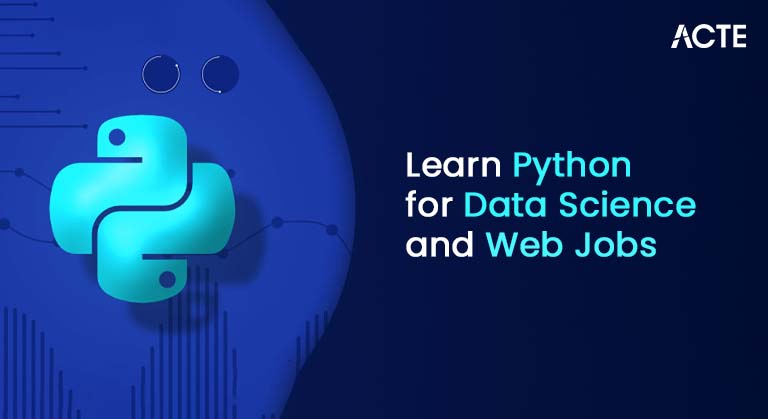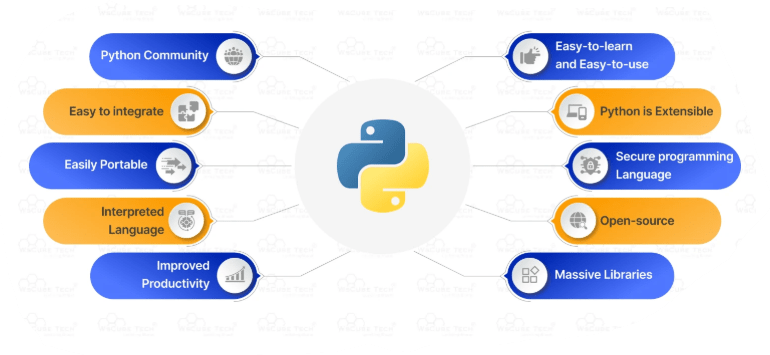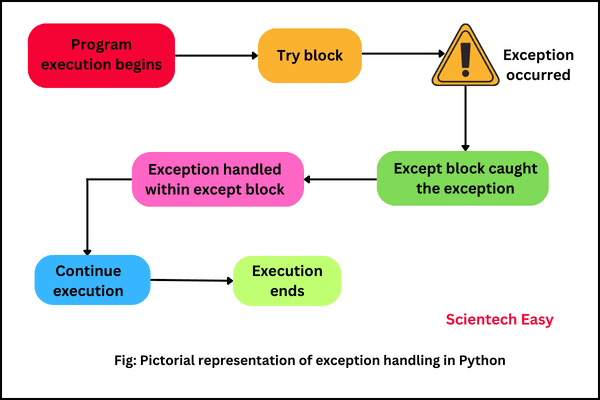
- Introduction
- What Does a Python Developer Do
- Python Vs. Other Programming Languages
- Skills Required to Become a Python Developer
- How to Become a Python Developer
- Conclusion
Introduction
In today’s fast-paced digital world, Python has emerged as one of the most powerful and versatile programming languages. From startups to tech giants, companies across the globe are using Python to build robust applications, automate workflows, analyze data, and drive innovation. Its simple syntax and vast library support make it an ideal choice not only for seasoned developers but also for beginners entering the programming world. As Python continues to dominate fields like web development, data science, machine learning, artificial intelligence, cloud computing, and automation, the demand for skilled Python developers is reaching new heights. Whether you’re a student, a fresh graduate, or a professional looking to switch careers, learning Python through Data Science Training can open doors to countless job opportunities and exciting projects. This comprehensive guide will take you through everything you need to know to become a successful Python developer. From mastering the core concepts and understanding key tools, to building real-world projects and preparing for interviews, we’ve broken down each step in a structured, easy-to-follow roadmap. No matter your starting point, if you follow this path with dedication and consistency, you’ll be well-equipped to thrive in the world of Python development.
Eager to Acquire Your Data Science Certification? View The Data Science Course Offered By ACTE Right Now!
What Does a Python Developer Do
- A Python developer is an expert who’s well-geared up to increase software programs and the usage of the Python programming language.
- They additionally cope with disposing of insects that the checking-out crew has identified.
- Today, whilst we speak Software Development Engineer (SDE), DevOps stands proud as a crucial component. This also leads Python builders to be aware of growing deployment automation.
- However, in a bigger context, Python builders aren’t confined to growing software programs.
- They address more than one technology, including internet improvement, information analytics, gadget-gaining knowledge of algorithms, IoT, or even modern-day AI solutions, all through simple Python programming.
Python Vs. Other Programming Languages
Python stands proud amongst different programming languages because of its simplicity, readability, and versatility. Unlike languages like Java or C++, Python has an easy-to-apprehend syntax, making it a terrific preference for beginners. It helps more than one programming paradigm, including procedural, object-oriented, and functional programming, presenting flexibility for diverse projects. While languages like Advanced Javascript dominate front-quit improvement and R is frequently favored for statistical analysis, Python is broadly used throughout fields including internet improvement, information science, gadget gaining knowledge of, automation, and more. Its considerable environment of libraries and frameworks, alongside a sturdy community, makes improvement quicker and more efficient. When assessing different languages, Python is probably slower in execution because of its interpreted nature. However, it makes up for it with fast improvement abilities and simplicity of integration with different technology.

Skills Required to Become a Python Developer
In the software program improvement team, a Python developer is specifically responsible for writing, testing, and preserving Python code. They additionally contribute to a wide variety of tasks, including automation, constructing ML algorithms, constructing information pipelines, or even growing AI answers.
Here are a number of the maximum, not unusual place talents that can now be highlighted for Python Career developer process descriptions on LinkedIn, and they may be as follows:
- Python Fundamentals
- Knowledge of (PostgreSQL and MySQL)
- (List, Tuple, Dictionary)
- Debugging Python Code
- Automation Scripting
- A Basic Knowledge of Linux and Cloud Computing
How to Become a Python Developer
- Data Science
- Machine Learning
- Web Development
- Automation
- To-do apps
- Weather apps
- Data dashboards
- Django: A high-level framework that follows the “batteries-included” philosophy. It simplifies the development of secure and maintainable websites.
- Flask: A lightweight and flexible micro-framework ideal for small applications or when you want full control over components.
- FastAPI: A modern, high-performance web framework for building APIs with Python 3.7+ based on standard Python type hints.
- NumPy & Pandas: Essential for data manipulation and numerical operations.
- Matplotlib & Seaborn: Used for data visualization.
- Scikit-learn: A comprehensive Machine Learning library.
- TensorFlow & PyTorch: Popular libraries for deep learning and AI model development.
- Only Watching Tutorials Without Practicing: Watching without coding leads to passive Learning Potential. Always write code alongside lessons.
- Skipping Fundamentals: Jumping into advanced topics like frameworks or ML without a solid grasp of basics can be overwhelming. Master variables, loops, and functions first.
- Poor Code Formatting: Ignoring PEP8 guidelines can lead to unreadable code. Always aim for clarity and consistency.
- Not Using Version Control: Avoid writing code without tracking changes. Use Git from the beginning to maintain a clean development workflow.
- Avoiding Debugging: New developers often get stuck and copy-paste solutions. Instead, embrace debugging to understand errors and improve problem-solving skills.
Step 1: Learn Python Basics
Start with the basics of Python. Pick one learning platform (like a course or book), and practice everything you learn. Don’t just watch videos—code along.
Step 2: Learn Data Structures & Algorithms
Understand how to solve problems using lists, dictionaries, graphs, and sorting/searching methods. This helps you build logic and crack interviews.
Step 3: Practice Problem Solving
Use sites like LeetCode, HackerRank, or Codeforces. Solve 3–5 problems daily. Start small, then level up. Learn from others’ solutions too.
Step 4: Choose Your Career Path
Python is used in many fields:
Pick the one you’re most interested in.
Step 5: Join Hackathons
Hackathons are coding competitions. They teach you teamwork, problem-solving, and how to build real-world projects fast. Great for networking too.
Ready to Earn Your Data Science Certificate? View The Data Science Course Offered By ACTE Right Now!
Step 6: Build Projects
Apply your skills. Create projects in different areas like:
Showcase your versatility.
Step 7: Write Clean Code
Keep your code simple and readable. Use good naming, add comments, and format well. It makes you stand out in teams and to employers.
Step 8: Build a GitHub Profile
Upload all your projects to Github. Add a clear README file and organized folders. Think of it as your online coding resume.
Step 9: Make a Resume
Mention your projects, GitHub links, skills, and any courses or certificates. Keep it short, clear, and focused.
Step 10: Be Active on Job Sites
Create profiles on LinkedIn, Indeed, Naukri, AngelList, etc. Keep your resume updated and apply regularly.
Step 11: Prepare for Interviews
Practice common Python and coding interview questions. Work on your communication and confidence. Mock interviews can help a lot.
Are You Considering Pursuing a Data Science Master’s Degree? Enroll For Data Science Master Course Today!
Top Python Frameworks and Libraries to Learn
To excel as a Python developer, it’s crucial to become familiar with the powerful frameworks and libraries that streamline development and reduce time to market. Through Data science Training, you can enhance your capabilities with these tools, whether you’re working in web development, data science, or automation.
For Web Development:
Set to Ace Your Microsoft Azure Job Interview? Check Out Our Blog on Data Science Interview Questions & Answer
For Data Science and ML:
Mastering these libraries not only boosts your efficiency but also prepares you to tackle real-world projects with confidence.

Common Mistakes to Avoid While Learning Python
As a beginner, it’s easy to fall into certain traps that can slow down your learning or result in poor coding habits. Here are some common mistakes and how to avoid them:
By steering clear of these mistakes, you can build strong foundational habits and become a more effective Python developer.
Conclusion
Becoming a Python developer calls for a based approach, regular practice, a robust basis in each center, and superior concepts. Starting with primary syntax, data types, and control structures, aspiring developers should steadily progress through Data Science Training to object-oriented programming, libraries like Pandas and NumPy, and frameworks such as Django or Flask, depending on their professional goals. Constructing real-global projects, contributing to open-supply code, and working towards problem-fixing via structures like LeetCode or HackerRank can notably decorate each ability and self-belief. Soft communication, collaboration, and flexibility abilities are similarly critical in expert settings. In conclusion, with determination and the proper mastering path, everyone can grow into a successful Python developer and release possibilities in net development, facts science, automation, and more.


